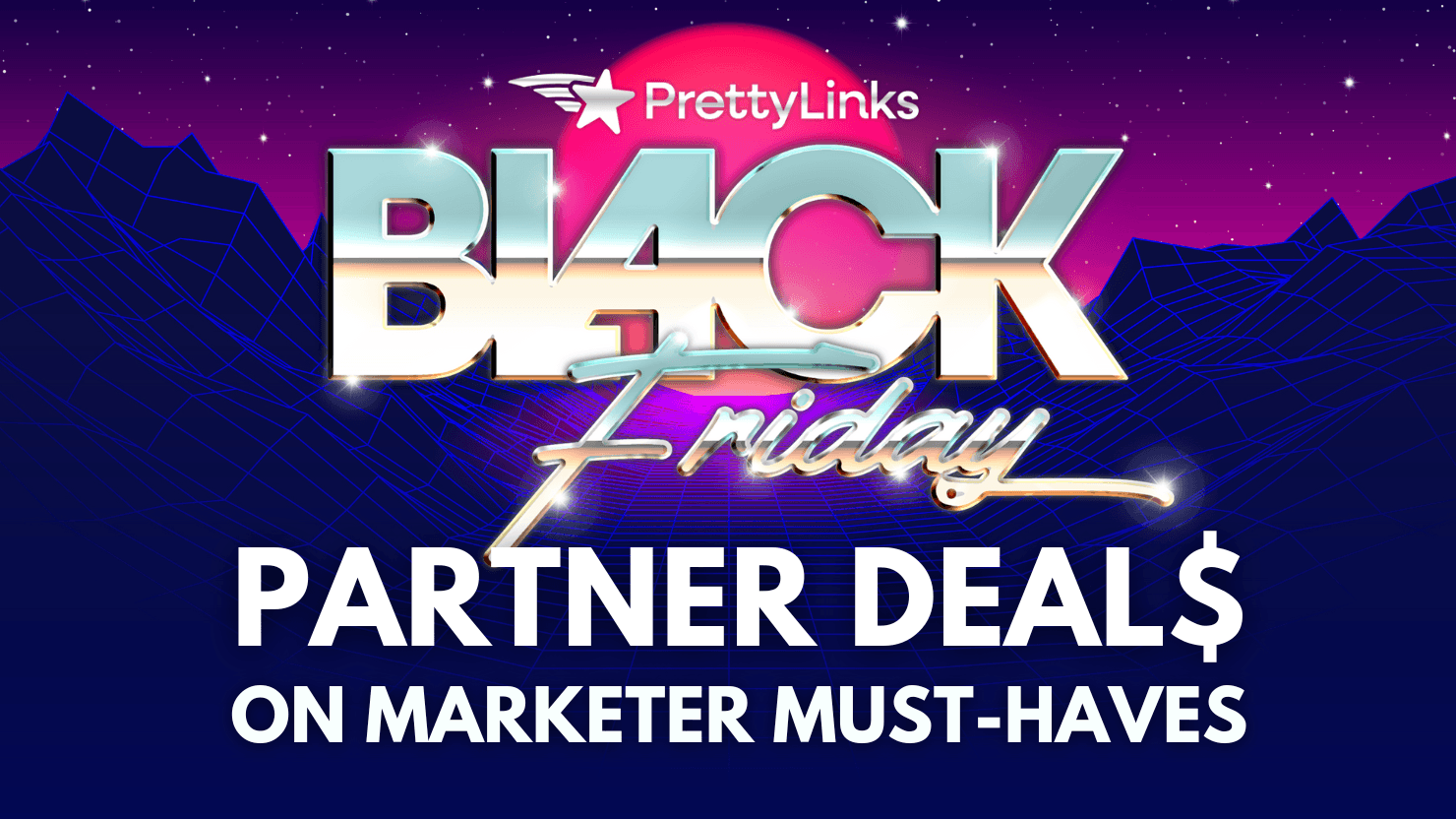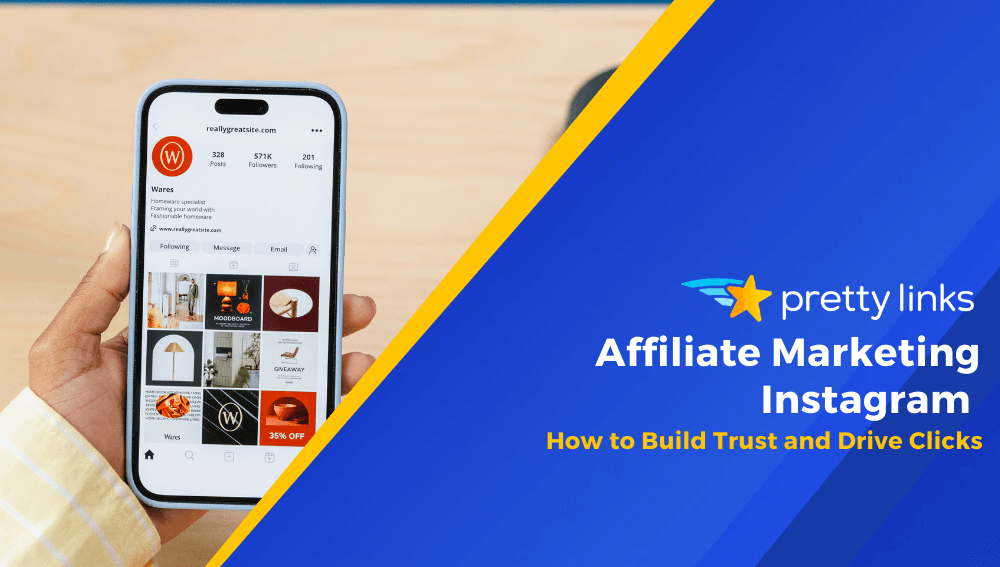Contents
Struggling to pick the perfect domain name? These 10 tips will help you choose something memorable, flexible, and built to support your brand long-term.
You’re finally ready to launch your brand or start that online business – and then comes the part no one warns you about: picking the perfect domain name.
Suddenly, your brain is buzzing with questions:
- Do I use my name?
- Something fun or personal?
- What if I want to pivot later?
- Should it be catchy? Professional? Short?
Before you know it, you’re spiraling at 2 a.m. over dot-coms, wondering if all the good names are already taken.
And there’s a reason it feels so high stakes. Your domain isn’t just a URL; it’s the start of your brand story. It’s the first thing people see, hear, or type when they’re trying to find you.
In this post, we’ll walk through 10 tips to help you pick a domain name that feels right and grows with your brand. We’ll also look at real examples and how affiliate marketers use PrettyLinks to create custom links that keep their branding strong from the first click.
Why Domain Name Memorability Matters More Than You Think
Your domain is the name people type, search, click, and mention, sometimes all in a few seconds. If it’s confusing or forgettable, it doesn’t just disappear. It drags down everything you’re trying to build: your traffic, your credibility, even your sales.
A memorable domain makes it easier for people to come back. It helps word of mouth spread. It keeps you from losing potential customers to typos, misheard names, or lookalike brands.
For affiliate marketers, domain name memorability can mean more clicks and more commissions. A domain that looks clean and on-brand performs better than one that looks generic or confusing.
10 Domain Name Tips for Building a Memorable Brand
You’ve probably tossed around a handful of ideas—some felt like contenders, others instantly cringey. So how do you find the one?
Here are 10 naming tips to help you cut through the noise and lock in a domain you won’t regret later.
1. Start with Your Brand in Mind
Before using name generators or combining random words, take a moment to consider what your brand represents. How you want people to feel when they see or hear your domain?
It doesn’t need to describe everything you offer, but it should align with your overall tone. A creative business might lean into something playful or modern, while a consultancy may benefit from something more polished or professional.
For example, a name like PixelNest instantly feels design-focused and creative, while OnlineDesignCompany123 feels generic and forgettable. The goal is to choose something that feels like a natural extension of your brand personality.
2. Keep It Short and Simple
When choosing a name, avoid unnecessarily long options. You don’t have to use a single word, but squeezing in four or five is usually a sign you’re overcomplicating it.
If your domain sounds like a tongue twister or reads like a full sentence, it’s time to simplify. A tight, straightforward name is far more likely to stick.
For example, Sarahlikestoreadandbakecookies.com sounds witty, but too long; Sarahreadsbakes.com might be a shorter, wittier, and better option.
3. Make It Easy to Say, Spell, and Type
If someone hears your domain once, whether on a podcast, in a video, or during a casual conversation, they should be able to type it correctly without asking for clarification. That’s the “radio test,” and it’s a great way to catch any confusing spellings or pronunciations early.
Avoid domain names that include double letters, hyphens, numbers, or word mashups (e.g, pressstarttutor.com, write-well.com, or read2well.com). These may seem creative, but they often lead to typos or hesitation.
Aim for clean, intuitive words that pass both the ear and eye test on the first try.
5. Use Alliteration or Rhythm
Domain names like PayPal, Coca-Cola, and SnackStack work for a reason—they sound good. That kind of natural rhythm or repetition gives your brand a built-in memorability boost. It rolls off the tongue, feels fun to say, and sticks in your head without much effort.
To make this work for your own domain, start by playing with repeated starting sounds or syllables. Two short words often create the best rhythm, especially when they have a nice balance of consonants and vowels.
Say your options out loud as you brainstorm. If something feels awkward to pronounce or clunky to repeat, it’s probably not the one.
You don’t have to force it—but if your name flows easily, it instantly becomes more brandable and more likely to get remembered, shared, and searched for later.
6. Choose the Right Domain Extension
Your domain extension (the part after the dot) can also impact how people perceive and remember your site. While options like .studio, .store, or .blog are becoming more common, .com is still the default. It’s what most people type automatically and what they assume if you don’t say otherwise.
That said, niche extensions can work, especially if they make sense for your space. A site like fitbody.coach or poppyandclay.studio can still feel polished and on-brand.
Again, because .com is so deeply ingrained, people may assume your site ends in .com unless you clearly tell them otherwise. That means you’ll need to say your full domain out loud in conversations, spell it out in podcast intros, or highlight the extension clearly in social media graphics and promos so people don’t end up on the wrong site.
7. Check Availability Across Social Platforms
Your domain name is only part of your online presence. If you want your brand to be easy to find, it should show up consistently across social platforms too.
Before you settle on a domain, take a minute to check whether the matching (or closely matching) handles are available on Instagram, TikTok, YouTube, LinkedIn, and anywhere else you might show up.
Even if you’re not ready to use every platform now, claiming the handle early protects your brand for the future. It also makes it easier for people to connect the dots between your content, your website, and your affiliate links.
Use a tool like BrandSnag or Namecheckr to check availability fast and see how your domain name performs across the web. The more consistent your name is, the more likely people are to remember it and type it correctly.
8. Don’t Let Your Domain Name Box You In
Your domain should grow with you—not lock you into one product, platform, or phase of your affiliate journey. It’s tempting to name your site after the first offer you promote or the niche you’re in right now, but that can cause headaches later.
A name like BudgetPlannerTips.com makes sense for a blog about budgeting, but feels off-brand if you eventually cover investing, side hustles, or broader money advice. On the other hand, something like SmartMoneyHub.com gives you room to grow while still feeling relevant and trustworthy.
Niche clarity is important, but choose a domain that gives you flexibility. That way, when your content grows (or your commissions shift) you won’t need a full rebrand just to keep up.
9. Use Keywords that Reflect Your Niche
Your domain name is one of the first signals search engines (and people) use to understand your site. That’s why keyword research isn’t just helpful for blog posts and SEO, it matters at the domain level, too.
Here’s what most people miss: the right keyword can also improve exact-match visibility, help you stand out in search snippets, and make your domain easier to trust at a glance.
Start by using tools like SEMrush, Google Keyword Planner, or Ubersuggest to find niche-specific phrases with consistent search volume. Then, test combinations using domain name generators or brainstorm ways to blend the keyword with your brand voice. Look for phrasing patterns, modifiers, or keyword pairings that feel natural and reflect real search behavior.
10. Check for Legal Conflicts
Before you officially register your domain, take a few extra minutes to check for existing trademarks. You don’t want to build a brand around a name that’s already taken—or worse, legally protected.
Start by searching the U.S. Patent and Trademark Office (USPTO) database or your country’s equivalent. Look for any registered trademarks that match or closely resemble your domain name, especially in the same category or niche.
If you’re building a pet affiliate site, for example, and the name you’re considering is already in use by a pet food brand, that’s a red flag. Even if the domain is technically available, using it could lead to confusion or force a rebrand down the line.
You should also do a quick Google search, check major social platforms, and see how the name is being used elsewhere. If someone already has strong brand recognition around a similar name, it’s smart to pivot around that early too.
Bonus Tip!
11. Consider How It Looks in a Logo
Your domain name will appear in more places than just the browser bar. It’ll show up in your logo, on graphics, and across your brand materials—so it needs to look as good as it sounds.
To make sure it holds up visually, try mocking up a few simple logo concepts using a tool like Canva. Use basic fonts and layouts to test readability, spacing, and overall balance. The goal here isn’t to design your final logo, it’s to see how your domain behaves in real-world use.
Look closely at how the words sit together. Are they easy to read at a glance? Do any letters run into each other or create accidental shapes? Does the name feel clean and professional, or does it crowd the space and feel awkward?
If your name doesn’t work in a basic logo, it’ll likely struggle across other brand visuals too.
How to Personalize Affiliate Links with Your Domain Name using PrettyLinks
Landing a strong domain name is a big step—but it shouldn’t stop at your homepage. Every link you share is an opportunity to strengthen your brand, especially if you’re promoting affiliate products.
Raw affiliate URLs are long, messy, and forgettable. They don’t reflect your brand, and they can even look suspicious to your audience.
With the PrettyLinks plugin, you can turn cluttered links like affiliatepartner.com/?ref=AJ2398h into clean, branded URLs like yourdomain.com/recommends/toolname.
Every link becomes a subtle but powerful brand touchpoint to:
- Build trust by looking clean, clickable, and professional
- Reinforce your domain name so people remember you, not the affiliate network
- Stay consistent across platforms, so your links always look like they came from you
With PrettyLinks, your domain becomes part of every share, every post, and every promotion—so your brand stays front and center, right where it belongs.
3 Examples of Memorable Domains (and What Makes Them Work)
Let’s look at a few everyday brands and creators who’ve nailed their domain names and why their names work so well.
1. LittleHandsCreations.com

LittleHandsCreations.com tells you exactly who it’s for and what it’s about—creative, hands-on projects for kids. It’s warm, visual, and easy to remember, which makes it a strong fit for a brand targeting parents, teachers, or kid-focused crafters.
The phrase “Little Hands” taps into emotion and age range without feeling cutesy or vague, while “Creations” leaves room for growth across products, tutorials, or digital downloads.
2. TheWorldTravelGuy.com

TheWorldTravelGuy.com blends personal branding with niche clarity. It’s casual, descriptive, and instantly gives you a sense of what to expect: global travel tips from a single, relatable voice.
The inclusion of “guy” makes it more approachable, while “world travel” keeps it broad enough to cover a wide range of destinations and content types without needing a rebrand down the road.
3. MinimalistBaker.com

MinimalistBaker.com immediately communicates what the site offers—simple recipes, no unnecessary ingredients, and a focused approach to cooking. The name is clear, niche-specific, and easy to search.
By pairing a recognizable lifestyle word with a specific role, it strikes the right balance between broad appeal and targeted content. It’s also short enough to remember, easy to say, and clean in design—everything you want in a domain name built for growth.
. . .
Each of these domains follows different strategies – some use keywords, others lean into emotion or personality – but they all share the same core traits: clarity, relevance, and memorability.
Conclusion
Your domain name does more than point to your website—it sets the tone for everything you build. It’s what people type, remember, and share. So take the time to get it right. Pick something that fits, feels good, and gives you room to grow.
And once you’ve got it? Don’t let it stop at your homepage. With PrettyLinks, you can turn that same domain into clean, branded affiliate links that show up everywhere you do—on social, in emails, in DMs. It’s one of the simplest ways to keep your brand strong and consistent from the very first click.
Let’s Talk About It 👉 What’s the best (or worst) domain name you’ve ever come across? Whether it made you laugh, cringe, or click, drop it in the comments and tell us why it stuck with you.
Let’s Stay Connected! Follow us on Facebook, Twitter, Pinterest, LinkedIn, and YouTube for more tips, tricks, and insights. And, don’t miss out on our exclusive content – subscribe to our newsletter today! 📬









Leave a Reply